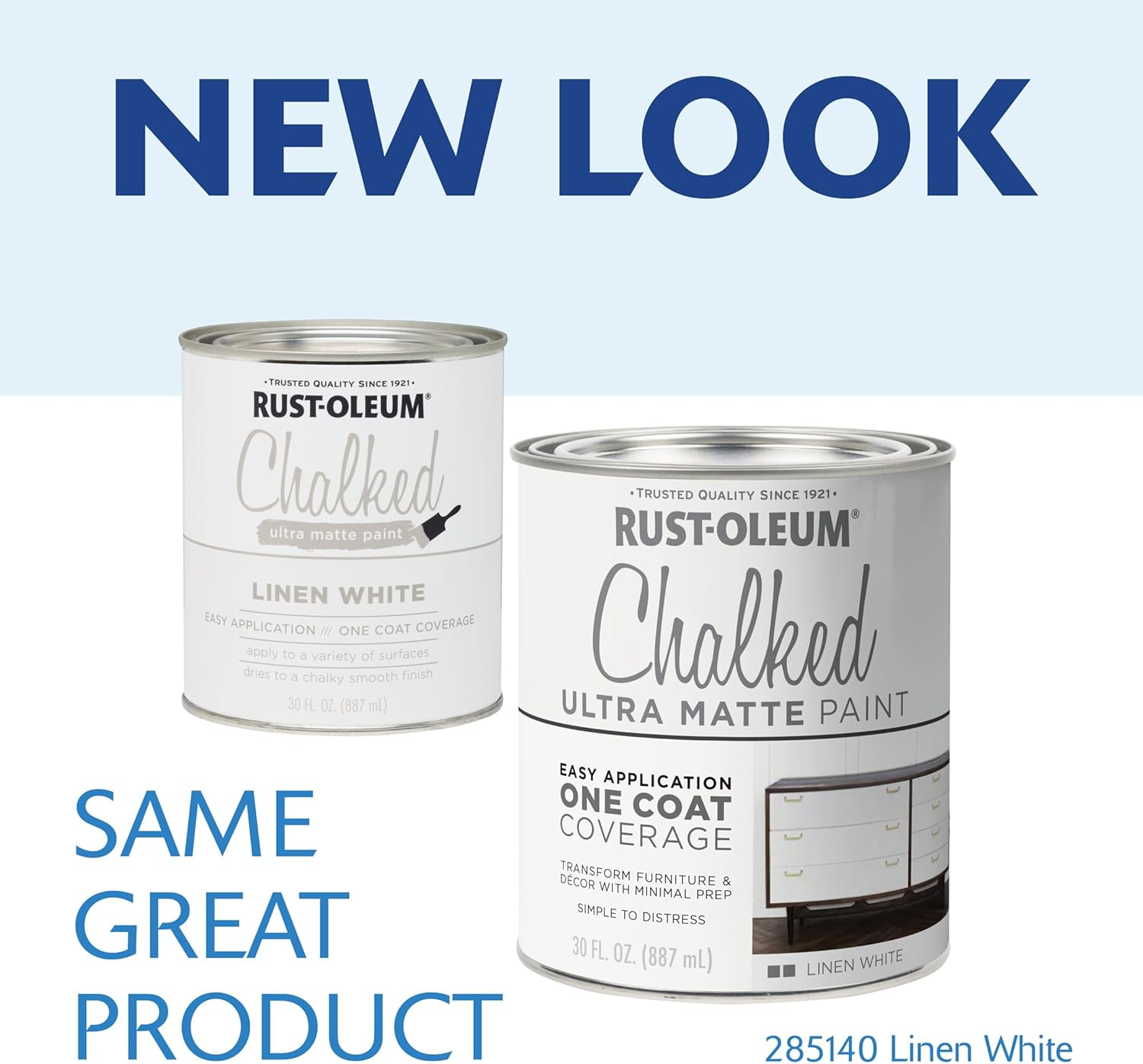Giving an old wood dresser a fresh coat of paint is one of the most rewarding DIY projects, capable of transforming a tired piece of furniture into a stunning focal point for any room. However, the success of your project hinges on a single, critical decision: choosing the best paint for a wood dresser. The wrong type of paint can lead to a sticky finish, easy chipping, or a lackluster appearance that fails to stand the test of time. With a overwhelming array of options available, from chalky matte finishes to high-gloss enamels, navigating the world of furniture paint can feel daunting.
This comprehensive buying guide is designed to demystify the process and empower you with the knowledge to make the perfect choice. We will break down the different types of paint, analyze their pros and cons for furniture use, and explore the essential preparatory and finishing steps. Whether you’re a seasoned DIY enthusiast or a first-time painter, understanding the key characteristics of the best paint for a wood dresser will ensure your upcycled piece not only looks professionally done but also boasts a durable, hard-wearing finish that protects your wood dresser for years to come.
Key Considerations When Choosing Furniture Paint
Before you head to the store, it’s crucial to understand the factors that differentiate furniture paint from standard wall paint. This will help you narrow down your options and achieve a result you love.
Finish and Sheen: The Final Look
The sheen, or gloss level, of the paint dramatically affects both the aesthetics and durability of your finished dresser.
- Matte/Chalky: Offers a velvety, flat finish that is excellent for hiding imperfections on the wood dresser. Very trendy for a rustic or shabby-chic look, but it can be less durable and harder to clean than other finishes.
- Eggshell/Satin: Provides a soft, low-luster glow with a slight hint of shine. This is a fantastic all-around choice, offering good durability and ease of cleaning, making it ideal for a dresser that will see regular use.
- Semi-Gloss/Gloss: Delivers a shiny, reflective finish that is highly durable, easy to wipe clean, and resistant to moisture. Perfect for a child’s room or a bathroom dresser, but it will highlight every surface imperfection, so proper preparation is key.
Durability and Hardness
A dresser is a high-touch piece of furniture. Drawers are constantly opened and closed, and the top surface is prone to scuffs, spills, and general wear and tear.
- Look for “Hard” Finishes: Paints labeled as “enamel” or those specifically formulated for furniture and cabinets are designed to cure to a harder finish than standard wall paint.
- Cure Time vs. Dry Time: Understand that paint dries to the touch quickly but can take weeks to fully cure and reach its maximum hardness. Avoid placing heavy or abrasive objects on the surface until it has fully cured.
Prep Work and Priming
The amount of prep work you’re willing to do can influence your paint choice.
- No-Prep Paints: Some specialty paints, like certain chalk paints, advertise that they can adhere to surfaces without sanding or priming. While this can be true for some projects, for a long-lasting finish on a well-used dresser, light sanding is always recommended.
- Traditional Paints: Latex and oil-based enamels typically require thorough cleaning, sanding, and a bonding primer for best adhesion and to prevent bleed-through from wood tannins or old stains.
Types of Paint: Finding the Best Paint for a Wood Dresser
Here is a breakdown of the most common paint types used for furniture, each with its own unique application and finish.
1. Chalk Paint
Popularized by brands like Annie Sloan, chalk paint is known for its thick, matte, velvety finish.
- Pros: Requires minimal surface prep (often no priming), excellent adhesion, and is great for creating distressed looks. Dries quickly.
- Cons: Almost always requires a protective topcoat (wax or polyurethane) to be durable and washable. The matte finish can show marks and be difficult to clean without a topcoat.
- Best For: DIYers looking for an easy, vintage, or distressed style. Ideal for pieces that won’t see heavy daily abuse.
2. Milk Paint
A historical paint made from milk protein, lime, and pigments. It comes in a powder form that you mix with water.
- Pros: Creates a unique, authentic historical finish that can be smooth or chippy, depending on the surface and application. Very eco-friendly and has zero VOCs.
- Cons: The finish can be unpredictable; it may chip intentionally or unintentionally. Requires thorough mixing and has a short pot life once mixed. Almost always needs a topcoat.
- Best For: Achieving an authentic antique or rustic look. Best for experienced DIYers or those embracing an unpredictable, organic finish.
3. Acrylic Paint (Water-Based)
This category includes standard latex paint and advanced water-based enamel paints formulated for furniture and cabinets.
- Pros: Easy water cleanup, low odor, fast dry time, and available in an endless array of colors. Modern water-based enamels are incredibly durable and self-leveling (smooth out brush strokes).
- Cons: Can raise the wood grain, requiring a light sanding after the first coat. Cheaper latex paints may not cure to a hard enough finish for a dresser.
- Best For: A huge range of projects. Specifically, look for “cabinet and furniture enamel” for the most durable, hard, and smooth result.
4. Oil-Based Enamel Paint
The traditional choice for a supremely hard, durable, and self-leveling finish.
- Pros: Cures to an exceptionally hard, glossy, and durable surface that is resistant to wear, moisture, and chemicals. Excellent self-leveling properties for a smooth, brush-stroke-free finish.
- Cons: Strong fumes and require mineral spirits for cleanup. Long dry and cure times (can take 24+ hours to dry to the touch and weeks to fully cure).
- Best For: High-traffic pieces, dressers in kids’ rooms, or for anyone seeking a classic, ultra-durable, professional-grade finish.
Essential Prep and Application Tools
The best paint for a wood dresser can still fail with poor preparation and application.
- Preparation:
- Clean: Remove all hardware and thoroughly clean the dresser with a degreaser or TSP substitute to remove wax, oil, and grime.
- Sand: Lightly sand all surfaces with 120-150 grit sandpaper to rough up the finish and create a “tooth” for the paint to grip. Wipe away all dust with a tack cloth.
- Prime: Apply a high-quality bonding primer. This is crucial for blocking stains, preventing tannin bleed-through, and ensuring topcoat adhesion.
- Application Tools:
- Brushes: Use high-quality synthetic bristle brushes for water-based paint and natural bristle brushes for oil-based paint. A 2-inch angled sash brush is versatile for edges and flat surfaces.
- Rollers: A high-density foam roller is excellent for applying a smooth, even coat on large, flat panels without lint.
- Sprayer: A HVLP (High Volume Low Pressure) sprayer will give you the most professional, factory-like smooth finish but has a steeper learning curve and requires more setup and cleanup.
The Final Step: Protecting Your Work
For any paint that isn’t a pre-formulated, self-sealing enamel, a protective topcoat is essential for durability.
- Water-Based Polyurethane: Clear, low odor, and quick drying. It won’t yellow over time, making it ideal for white and light-colored paints.
- Oil-Based Polyurethane: Extremely durable and amber in color, which can warm up the paint color but may yellow whites over time.
- Polycrylic: A water-based protective finish that is very clear and non-yellowing. A great all-purpose choice.
- Furniture Wax: Provides a soft, matte sheen and is easy to apply. However, it offers less protection than polyurethane and can be susceptible to heat and water marks.
Conclusion: Unleash Your Dresser’s Potential
Selecting the best paint for a wood dresser is the fundamental step that bridges the gap between a vision and a stunning, long-lasting reality. By carefully considering the finish, durability, and preparation requirements of each paint type, you can confidently choose a product that aligns with your skill level and desired outcome. Remember that the effort invested in proper preparation—cleaning, sanding, and priming—is just as important as the paint itself in achieving a professional-quality result.
Whether you choose the user-friendly nature of chalk paint, the vintage charm of milk paint, or the rugged durability of a modern furniture enamel, your newly painted dresser will serve as a testament to your creativity and effort. Armed with this knowledge, you are ready to embark on your project with confidence, transforming a simple piece of furniture into a personalized and beautiful asset for your home.
1. Rust-Oleum Chalked Ultra Matte Paint
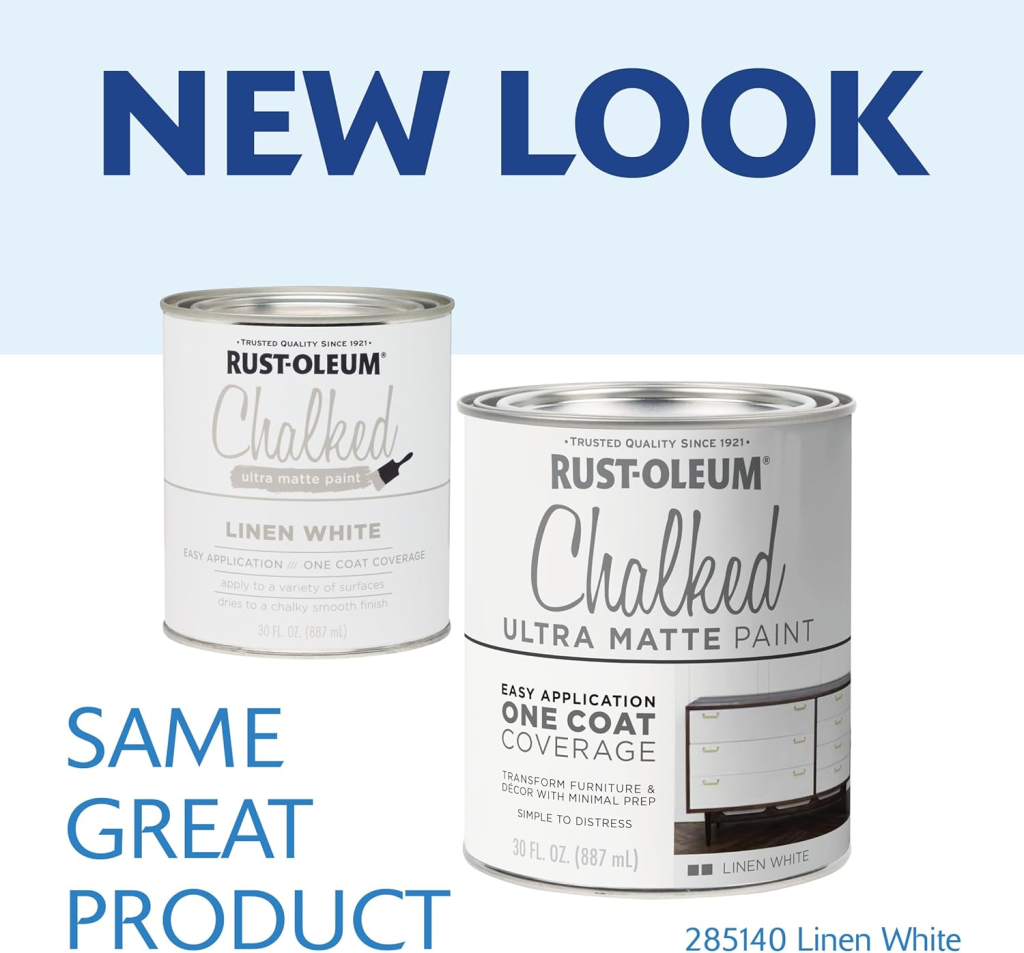
Long Description:
Rust-Oleum Chalked Ultra Matte Paint is a consumer-friendly chalk paint that has helped popularize the distressed and vintage furniture look. It’s designed to create a premium, ultra-matte finish with excellent coverage and adhesion. This paint is lauded for its ease of use, as it often requires minimal surface preparation compared to traditional paints; a good cleaning and light sanding are usually sufficient. It provides a velvety, porous finish that is perfect for accepting protective waxes or topcoats and is ideal for creating a layered, distressed look by lightly sanding edges after painting. It’s a water-based, low-odor formula that cleans up easily, making it a great choice for indoor projects.
Key Features:
- Finish: Ultra-Matte, chalky finish.
- Base: Water-based, low-odor formula.
- Prep: Designed for minimal prep; adheres to most surfaces including wood, metal, and laminate.
- Coverage: Covers up to 150 sq ft per quart.
- Application: Can be applied with a brush or roller.
Pros:
- Very easy to use, especially for beginners.
- Requires minimal surface preparation (no primer needed on many surfaces).
- Dries quickly to a stylish, velvety matte finish.
- Excellent for achieving distressed and vintage styles.
Cons:
- Requires a protective topcoat (like wax or polyurethane) for durability and cleanability.
- The matte finish can be prone to marking and is not inherently wipeable.
- The color range, while good, is more limited than standard latex paint.
Recommendation:
Ideal for the DIYer looking to achieve a classic chalk-paint look with maximum ease. Perfect for dressers in low-traffic areas like a master bedroom or for those who love the vintage, distressed aesthetic.
2. Behr Cabinet & Trim Enamel
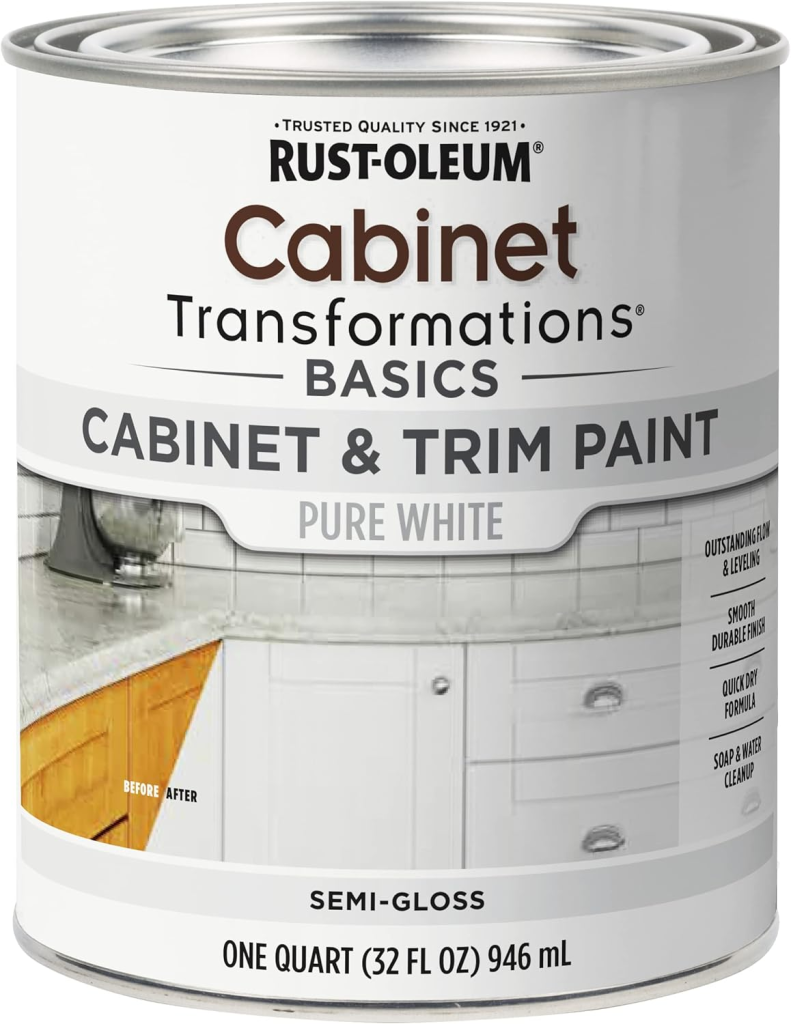
Long Description:
Behr Cabinet & Trim Enamel is a heavy-duty, water-based paint specifically engineered for high-traffic surfaces like kitchen cabinets and furniture. This paint is designed to compete with the durability of oil-based enamels without the fumes and cleanup hassle. It levels beautifully as it dries, minimizing brush and roller marks for a smooth, professional-looking finish. It cures to an extremely hard, durable surface that is resistant to scuffs, stains, and moisture. Available in a range of sheens from satin to semi-gloss, it provides a tough, wipeable finish that stands up to the daily use a dresser endures, from perfume bottles and jewelry to kids’ toys.
Key Features:
- Type: Advanced Water-Based Enamel.
- Finish: Satin, Semi-Gloss (durable and scrub-resistant).
- Durability: Resistant to scratches, stains, and moisture.
- Application: Self-leveling for a smooth finish; can be applied with a brush, roller, or sprayer.
- Primer: Often includes built-in primer for better adhesion and coverage.
Pros:
- Extremely durable and hard-wearing finish once fully cured.
- Self-leveling formula minimizes visible brush strokes.
- Low odor, easy water cleanup.
- Does not require a separate topcoat, saving time and money.
Cons:
- Requires more meticulous surface prep (cleaning, sanding, and priming) for best results.
- Longer recoat time than chalk paint (typically 4-6 hours).
- Can be thicker and require more skill to apply smoothly than all-in-one paints.
Recommendation:
The best overall choice for a durable, long-lasting finish. If your dresser will see heavy use in a busy bedroom, kids’ room, or entryway, this paint provides a professional, cabinet-quality result.
3. General Finishes Milk Paint
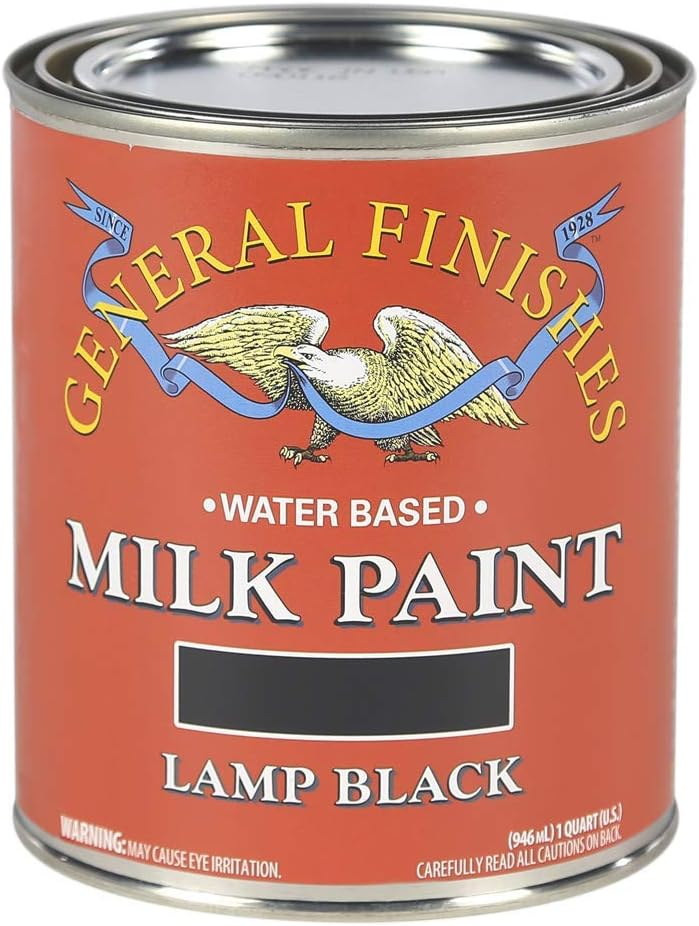
Long Description:
General Finishes Milk Paint is a modern, water-based interpretation of historical milk paint. Unlike traditional powder milk paints, it comes pre-mixed, offering consistency and ease of use while delivering a beautiful, flat to satin finish. It is renowned for its exceptional durability and does not require a topcoat for most applications, as it cures to a hard, wipeable surface. This paint flows on smoothly with excellent self-leveling properties, making it a favorite among professional furniture painters. It’s highly pigmented for great coverage and is less prone to the unpredictable chipping of traditional milk paint, giving you control over the final look, whether you want a smooth modern finish or a lightly distressed antique look.
Key Features:
- Type: Pre-mixed, water-based milk paint.
- Finish: Flat to Satin, durable finish.
- Topcoat: Topcoat is optional for most interior furniture.
- Application: Excellent self-leveling; apply with brush, roller, or sprayer.
- Durability: Cures to a hard, wipeable finish resistant to water and wear.
Pros:
- Extremely durable and hard finish without a mandatory topcoat.
- Excellent self-leveling for a smooth, professional result.
- Wide range of trendy, modern colors.
- More predictable and easier to use than traditional powder milk paint.
Cons:
- Higher price point per quart than some other options.
- Still benefits from proper surface preparation (sanding and priming on non-porous surfaces).
- The satin finish has more sheen than a true chalk paint, which may not be desired for some styles.
Recommendation:
The top choice for experienced DIYers and professionals seeking a superior, durable finish with a beautiful, modern flat look. It’s perfect for heirloom-quality pieces where longevity and a flawless finish are the top priorities.
4. Krylon COLORmaxx Spray Paint
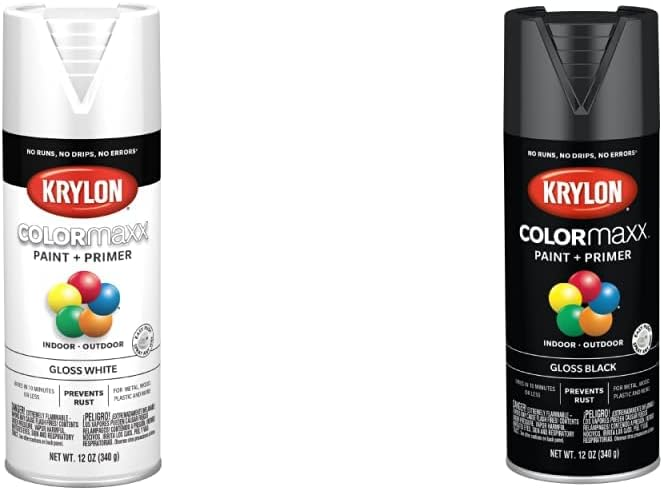
Long Description:
For a dresser with intricate spindle details, carved patterns, or a complex frame, Krylon COLORmaxx Spray Paint offers a solution that brushes can’t match. This general-purpose spray paint provides a smooth, uniform finish without brush marks, reaching into every nook and cranny. It features an acrylic and enamel formula that is durable and resistant to chipping and fading. While not as hard as a dedicated furniture enamel, it is surprisingly robust for interior projects. The key to a professional result with spray paint is technique: using light, multiple coats rather than one heavy coat to prevent drips. It’s a fast way to achieve a smooth, factory-like finish on detailed pieces.
Key Features:
- Application: Aerosol spray can for precise, brush-free application.
- Finish: Gloss, Satin, Flat.
- Formula: Acrylic and enamel blend for durability.
- Coverage: Dries quickly, covers up to 15 sq ft per can.
- Use: Ideal for hard-to-reach details and metal hardware.
Pros:
- Perfect for achieving a smooth finish on intricately detailed furniture.
- No brush strokes or roller marks.
- Fast-drying and easy to apply with practice.
- Great for simultaneously painting the wooden dresser and its metal hardware.
Cons:
- Can be messy and requires a well-ventilated space or outdoor area.
- Easy to create drips and runs if applied too heavily.
- Less cost-effective for painting large, flat surfaces compared to canned paint.
- Finish is not as hard-wearing as a brushed-on furniture enamel.
Recommendation:
Best for dressers with extensive carvings, spindles, or detailed trim. Also an excellent choice for giving old hardware a cohesive, new look. Not recommended for large, flat panels unless you are a very experienced sprayer.
5. Sherwin-Williams Emerald Urethane Trim Enam
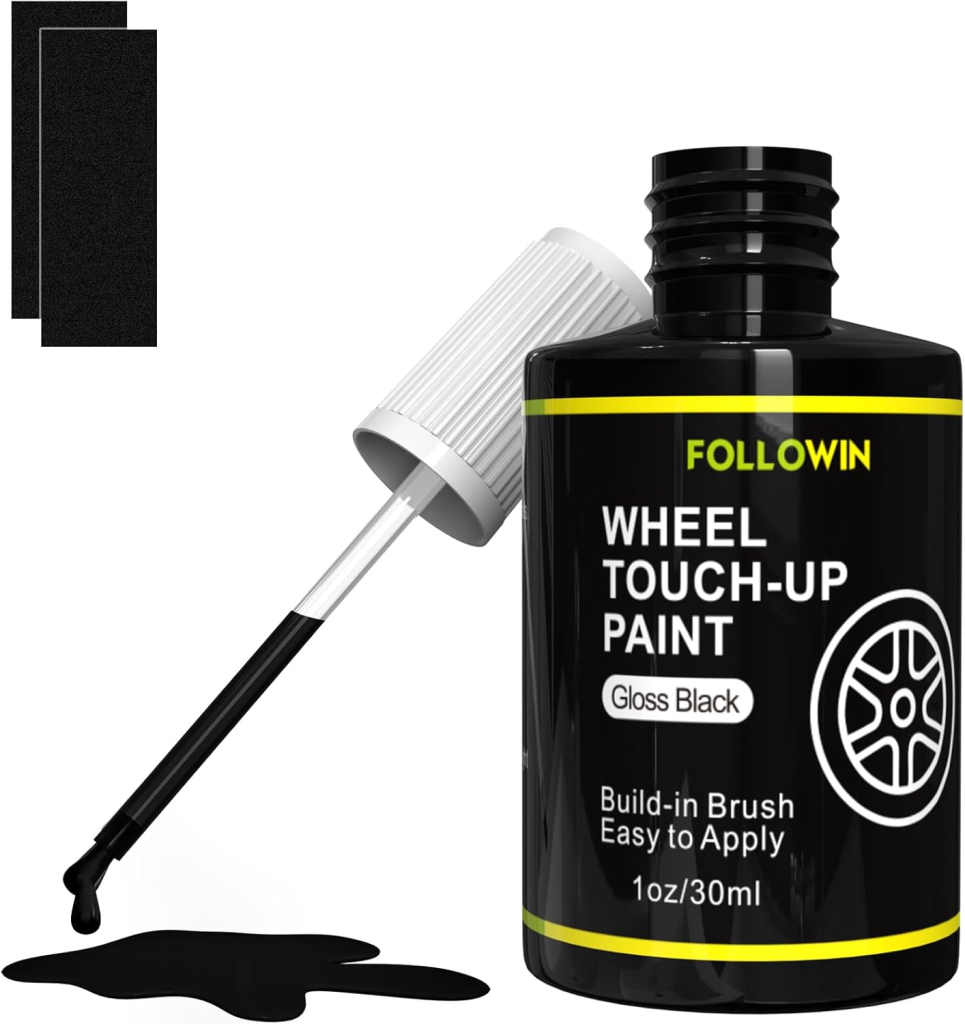
Long Description:
Sherwin-Williams Emerald Urethane Trim Enamel is a top-tier, water-based paint that is often described as a “game-changer” for its oil-like performance without the drawbacks. This is a professional-grade product that cures to an exceptionally hard, chemical-resistant finish rivaling traditional oil-based enamels. Its advanced urethane-modified formula provides incredible flow and leveling, resulting in a flawless surface with minimal brush marks. It is self-priming on most properly prepared surfaces and is highly resistant to yellowing, making it ideal for pure whites and light colors. While it comes with a premium price tag, its unparalleled durability and beautiful finish make it a worthy investment for a furniture piece you plan to keep for a long time.
Key Features:
- Type: Water-Based Urethane Enamel.
- Finish: Available in a full sheen range from Matte to Gloss.
- Durability: Exceptional hardness and resistance to scratches, stains, and chemicals.
- Application: Self-priming and self-leveling for a superior finish.
- Color Retention: Excellent resistance to yellowing.
Pros:
- Arguably the most durable and hard-wearing water-based finish available.
- Incredible self-leveling creates a near-perfect, smooth surface.
- Low odor and easy soap-and-water cleanup.
- Won’t yellow over time, preserving white and light colors.
Cons:
- Significantly more expensive than other options.
- Requires thorough surface preparation for the finish to perform as advertised.
- Long cure time (up to 30 days for full hardness), though it dries to the touch quickly.
Recommendation:
The premium, no-compromise choice for the discerning DIYer. If you want the absolute best durability and a flawless, professional-grade finish for a high-use dresser and are willing to pay for it, this is the product to choose.
6. Annie Sloan Chalk Paint
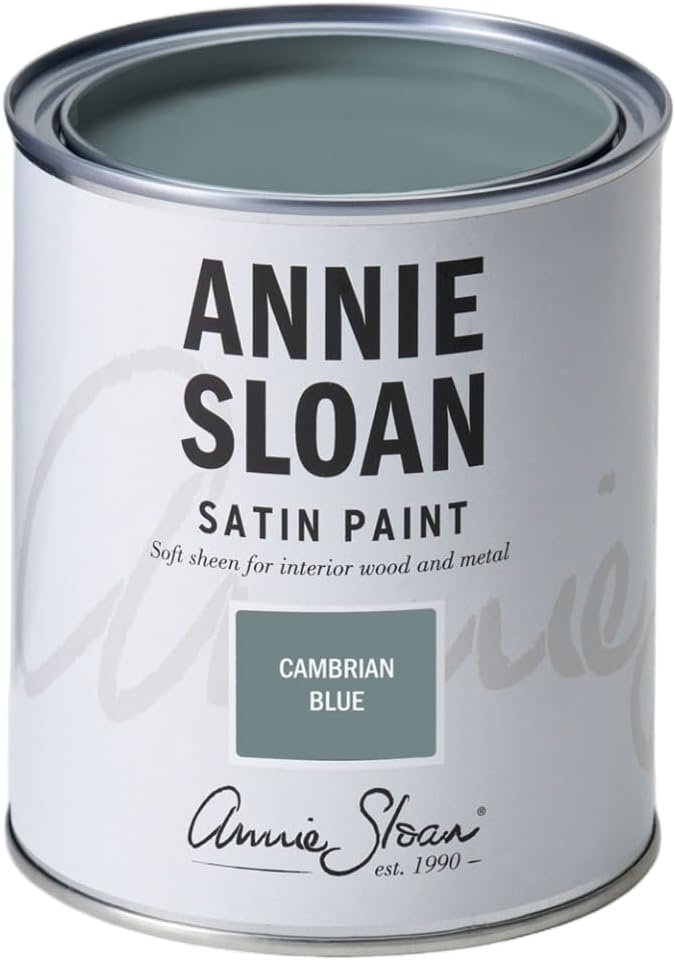
Long Description:
Annie Sloan is the original brand that sparked the modern chalk paint revolution. This paint is celebrated for its incredible versatility and rich, pigment-saturated colors. It is famously easy to use, adhering to almost any surface—wood, laminate, metal, concrete—with virtually no preparation other than cleaning. Its thick, creamy consistency provides excellent coverage, often in just one or two coats. The signature velvety, matte finish is designed to be enhanced with Annie Sloan’s own waxes, which can be used to create a range of effects, from a clear protective seal to dark, antiqued accents. It’s more than a paint; it’s a system for creating unique, artistic furniture finishes.
Key Features:
- Type: Original, high-quality chalk paint.
- Finish: Ultra-matte, chalky finish.
- Prep: Requires no priming or sanding on most surfaces.
- Versatility: Can be used on virtually any interior surface.
- System: Designed to be used with Annie Sloan Brushes and Waxes for best results.
Pros:
- The highest-quality chalk paint with a vast, curated color palette.
- Unmatched versatility and adhesion with virtually no prep.
- Thick consistency offers fantastic, one-coat coverage on many projects.
- The go-to choice for professional-level decorative painting techniques.
Cons:
- The most expensive option on the market by volume.
- Absolutely requires a wax or topcoat to be durable and washable.
- The proprietary system (special brushes, wax) can add to the overall cost.
Recommendation:
For the purist and the artist. If you are dedicated to achieving authentic, high-end chalk paint finishes and are willing to invest in the entire system (paint, brushes, wax), Annie Sloan is the gold standard. Ideal for decorative pieces and heirloom projects where the creative process is as important as the result.
How to Wash and Care for Your Painted Wood Dresser
Proper care is essential for maintaining the beauty and longevity of your newly painted wood dresser. Unlike factory-finished furniture, painted surfaces require specific cleaning methods to prevent damage to the paint finish. Using the wrong cleaners or techniques can cause clouding, softening, or permanent damage to the paint surface. Follow these guidelines to keep your painted dresser looking fresh and clean while protecting your hard work.
Daily and Weekly Maintenance
1. Dusting and Light Cleaning:
- Method: Use a soft, dry microfiber cloth to gently wipe down the surface. Microfiber attracts and holds dust without scratching.
- Frequency: Weekly dusting prevents buildup that can scratch the surface when wiped later.
- Technique: Always wipe in the direction of the wood grain, even though painted, to maintain smoothness and prevent micro-scratches.
2. For Sticky Spots and Light Soil:
- Solution: Mix a few drops of mild dish soap (like Dawn) with a gallon of warm water.
- Method: Dampen a soft cloth in the solution and wring it out thoroughly until it’s only slightly damp. Wipe the surface, then immediately follow with a dry microfiber cloth to remove any moisture.
- Important: Never allow water to pool or sit on the painted surface.
Dealing with Stains and Spills
1. Water-Based Paint Finishes (Chalk, Latex, Milk Paint):
- Fresh Spills: Blot immediately with a dry cloth. If residue remains, use the mild soap solution above.
- Grease Stains: Apply a small amount of rubbing alcohol to a clean cloth and dab the stain gently. Wipe with a damp cloth and dry immediately.
- Ink/Marker: Test isopropyl alcohol (70%) in an inconspicuous area first. If safe, dab gently until the stain lifts.
2. Oil-Based and Enamel Finishes:
- Most Stains: Use mineral spirits on a soft cloth for tough stains. Test in an unseen area first.
- General Cleaning: A mild vinegar solution (1 part vinegar to 10 parts water) works well for these more durable finishes.
Crucial Cautionary Tips: What to Avoid
- NEVER Use Abrasive Cleaners: Avoid scouring powders, steel wool, abrasive sponges, or harsh chemical cleaners. These will scratch and dull the painted finish permanently. Even “magic erasers” are mildly abrasive and should be used sparingly and with extreme caution.
- Avoid Ammonia and Bleach-Based Cleaners: These chemicals can break down the paint film, causing cloudiness, softening, or discoloration. They can be particularly damaging to water-based paint finishes.
- Never Soak the Surface: Painted wood is vulnerable to water damage. Excessive moisture can cause the paint to blister, peel, or allow water stains to seep through. Always wring out cleaning cloths thoroughly.
- Don’t Use Furniture Polish or Wax: Unless your dresser specifically has a wax finish (like chalk paint), avoid commercial furniture polishes. They can create a sticky film and may not be compatible with your paint’s topcoat.
- Protect from Heat and Direct Sunlight:
- Heat: Always use coasters or trivets under hot items. Heat can soften the paint and cause permanent indentation or discoloration.
- Sunlight: Prolonged direct sunlight can cause paint colors to fade over time. Consider positioning your dresser away from direct sun exposure.
- Mind the Cure Time: Remember that paint reaches its full hardness and chemical resistance only after it has fully cured. This can take 2-4 weeks. Be extra gentle with cleaning during this period.
Special Care for Different Paint Types
- Chalk Paint (with Wax Topcoat): The wax finish is more delicate. Dust frequently and use only a barely damp cloth for cleaning. Reapply wax every 1-2 years in high-use areas to maintain protection.
- Milk Paint (without Topcoat): Be especially careful with moisture, as these finishes are more porous. Clean only with a dry or very slightly damp cloth.
- Enamel Paints (Water or Oil-Based): These are the most durable for cleaning. You can use the mild soap solution more confidently, but still avoid harsh chemicals and abrasives.
Long-Term Maintenance Tips
- Address Scratches Immediately: Use a small touch-up kit with your original paint for minor scratches. Apply with a fine artist’s brush for best results.
- Handle with Care: Avoid dragging items across the surface. Lift objects rather than sliding them to prevent scratches.
- Regular Inspection: Check hardware (knobs, pulls) periodically to ensure they are tight. Loose hardware can damage the paint around it when used.
Frequently Asked Questions (FAQs)
How soon can I clean my newly painted dresser?
You should wait until the paint has fully cured before performing any wet cleaning. While paint may feel dry to the touch within hours, it can take 2-4 weeks to fully cure and reach maximum hardness. Before this time, the finish is more vulnerable to damage from cleaners and moisture. For the first month, stick to dry dusting only.
Can I use all-purpose spray cleaners on my painted furniture?
It is not recommended. Most all-purpose cleaners contain chemicals like ammonia or bleach that can degrade the paint film, causing cloudiness, softening, or discoloration. They can also strip the protective topcoat. For daily cleaning, a mild dish soap and water solution is the safest and most effective choice.
What should I do if water spots appear on the finish?
For fresh water spots, immediately wipe the area completely dry with a soft cloth. For existing spots, try gently buffing the area with a dry microfiber cloth. If the spotting persists, lightly dampen a cloth with a mild vinegar solution (1 part white vinegar to 10 parts water), wring it out thoroughly, and wipe the area. Follow immediately with a dry cloth. Never let the moisture sit.
How do I remove wax buildup from a chalk-painted dresser?
If your waxed finish feels sticky or has a cloudy buildup, you can gently wipe the surface with a cloth dampened with mineral spirits. Always test in an inconspicuous area first. Wipe with a clean cloth and allow to dry. This will cut through the excess wax without removing the entire protective layer.
Is it safe to use a furniture polish or pledge?
No, you should generally avoid commercial furniture polishes on painted surfaces. Many contain silicones or oils that can create a slippery, sticky film over time and may not be compatible with your paint’s topcoat (especially polyurethane). These products can also attract more dust. Dry dusting or a slightly damp cloth is a much safer and more effective method.
How can I repair scratches or chips in the paint?
For minor scratches, you can often use a colored furniture wax crayon that matches your paint color. For deeper chips, clean the area and use a small touch-up kit with your original paint. Apply it with a fine artist’s brush for precision. Once dry, you may need to lightly sand the area smooth and apply a small amount of matching topcoat to seal it.
Conclusion
Caring for a painted wood dresser is a simple yet crucial process that ensures your DIY project remains a source of pride for years to come. By understanding the specific needs of your paint finish—whether it’s a delicate chalk paint or a durable enamel—you can employ the right cleaning techniques to maintain its beauty without causing harm. The key principles of gentle dusting, using mild cleaners, avoiding harsh chemicals and abrasives, and protecting the surface from moisture and heat will preserve the integrity and appearance of your finish.
Remember that consistent, proper care is far more effective than trying to rectify damage caused by improper cleaning methods. Your painted dresser is not just a piece of furniture but a reflection of your creativity and effort. With the knowledge from this guide, you can confidently maintain its pristine condition, ensuring that this transformed piece continues to enhance your home with its unique character and style.

